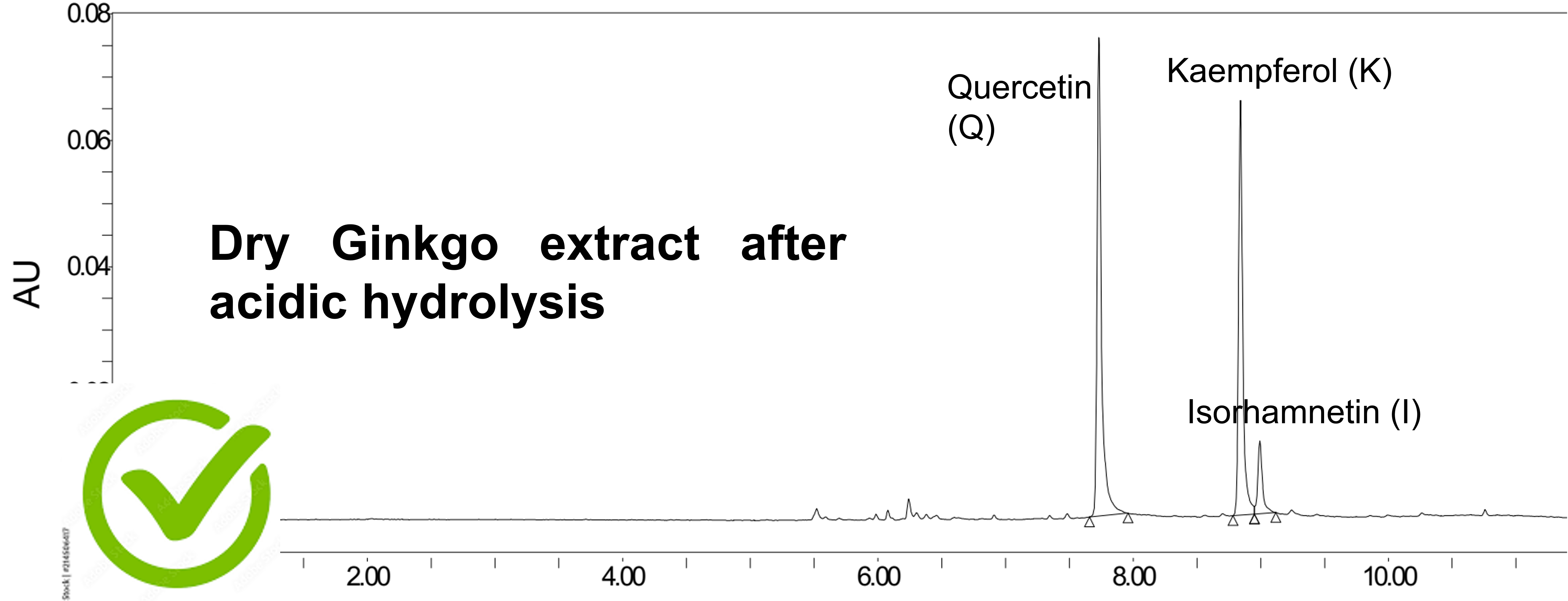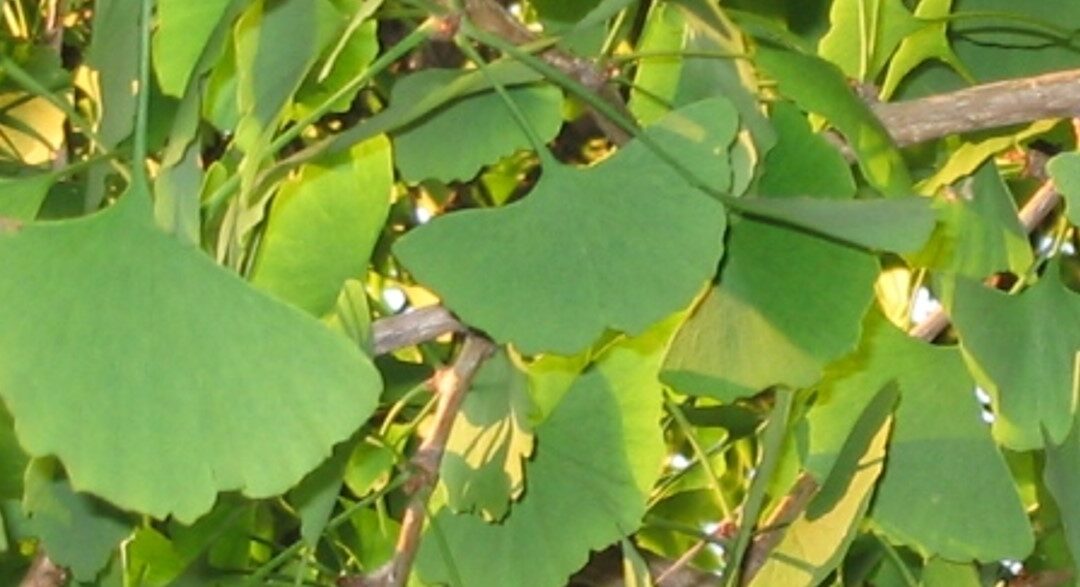
Introduction
Ginkgo is a tree that already existed 200 million years ago. Today it is said to be the oldest tree in the world. Its leaves contain very high levels of flavonoids, in particular glycosides of quercetin, kaempferol and isorhamnetin, which have antioxidant activity and are more particularly active in the retina and the brain. The leaves also contain sesquiterpene (bilobalide) and diterpene (ginkgolides A, B, C, J) lactones which are PAF (platelet activating factor) inhibitors. This anti-PAF property and those of the flavonoids could explain the many properties of Ginkgo, particularly as a vasoregulator. Indeed, Ginkgo is known to improve capillary permeability and peripheral circulation. Like all plants of interest on the market, Ginkgo is a very likely to be adulterated.
Study
Issue
The flavonoids found in Ginkgo are all derivatives of quercetin, kaempferol and isorhamnetin. These aglycones are frequently found in the plant kingdom. Also, if the control of the identity of the Ginkgo dry extract is done exclusively on the polyphenolic profile, the fraud could often not be detected.
The HPTLC/CCM test of the European Pharmacopoeia is precisely based only on polyphenolic substances using chlorogenic acid and rutin as reference substances.
This therefore means that if a fraudster decides to add another source of flavonoids to a Ginkgo sample, the fraud can go undetected by this type of control.

Customer samples analysis
All the Ginkgo samples have the same proportion of heteroside derivatives of the three aglycones mentioned above (and quoted on the chromatogram opposite) which means that if a total acid hydrolysis is carried out on a dry extract of Ginkgo, we will only see the 3 aglycones (all the glycosides will then have lost their sugars and are therefore found in the form of their respective genins).
If an addition of another source of flavonoids has been done, either other aglycones can be detected, or the ratio between the 3 aglycones is significantly different from the natural ratio of 1/1/0.1 for Q/K/I
- In sample A : we find only the 3 aglycones but quercetin is present in higher quantity compared to the other two aglycones. The ratio here is rather 4/1/0.1. There is Ginkgo but it has been diluted here by at least 2 with the addition of a source of quercetin which most likely comes from enrichment with an extract of Sophora flower buds (Styphnolobium japonicum (L.) Schott)
- In sample B : here the flavonoid profile is very different. It is not possible to be sure that the sample does contain Ginkgo. Indeed, other flavonoids are found and the ratio between kaempferol and isorhamnetin is significantly different from what is expected, showing that it is surely from another species. On the other hand, quercetin is present in very large quantities, which could suggest that the extract has been enriched with an extract of flower buds of Styphnolobium japonicum (L.) Schott.



CONCLUSION
Carrying out an unsuitable authentication control (based on only a few criteria) can prove to be worst than not doing anything.
How to ensure the quality of your Ginkgo samples?
By proving the presence of Ginkgo, the absence of another plant species, the absence of all types of enrichments and by verifying the quantities of active ingredients


Recent Comments